Does your website receive enough organic traffic? No! right… Then this article is going to help you find out the main reasons of losing organic traffic. You should implement a better SEO strategy to fix it immediately.
One of the most common dilemmas bloggers are faced with is plenty of content but a scarcity of organic traffic. Although having ample content is a prerequisite for thriving organic traffic, it is not the only parameter that matters. Also, a recent study insists that about 51% of your traffic should be organic.
SEO specialists at Blogger Outreach Agency take into account several factors that help them secure a good ranking for their website. If you are creating content frequently and are still not able to get traffic, there might be different reasons behind that.
First things first.
What is organic traffic?
Organic traffic is the best kind of traffic because it’s free as it comes from different search engines like Google, Bing, Yahoo, and Yandex. So, organic traffic depends on organic search. This means that when internet users search a certain keyword and your business appears on the first page and they click on it, you get some organic traffic.
As you can see, your website needs to rank in the top positions for specific keywords to help you get much organic traffic, meaning it must be SEO optimized. Therefore, you have to do some on-page and off-page SEO to maximize the chances of getting more traffic.
Below is an image showing organic search results. If you click on any of these top results, then the site will get organic traffic.
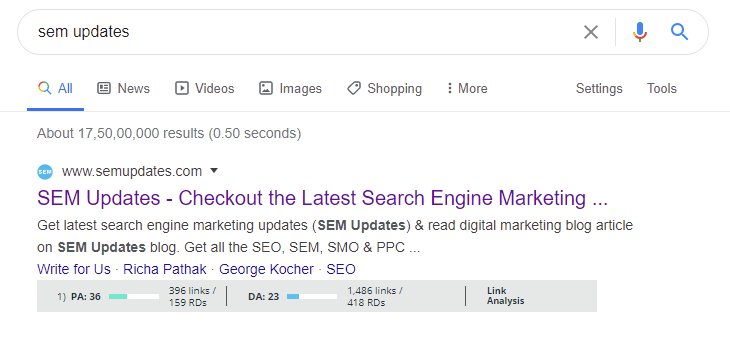
Why is organic traffic so important?
Unlike paid traffic, organic traffic allows you to target a specific audience more effectively. When people type a certain query, and your website pops up with an applicable solution, then you might get an email subscriber or even a customer.
So, visitors will start trusting your site, which is vital in helping to rank higher on search results. Also, Google considers organic traffic as among the most crucial ranking factors, hence making it critical to work on it tirelessly.
Besides organic traffic, here are the other types of traffic you should be aware of:
- Direct traffic
- Organic
- Paid
- Referral
- Social media and
- Bot traffic.
Now that you understand what organic traffic is, let’s discuss why your site is not getting enough of it, shall we?
Your website is not user-friendly
Gone are times when websites were just pages where people find the information they are looking for. Nowadays, users want your website to be informative, engaging, entertaining, and easy to use. A user will always consider these factors to determine if your website is friendly enough.
When we talk about a site being user-friendly, several factors play a role in it. User-friendly websites entail a mobile-friendly layout. People are using smartphones more than ever. Therefore, the probability is that a lot of the consumer base is using their phones to visit your website.
If your site is not mobile-friendly, your consumers will automatically be narrowed down. So, even if you publish amazing content, your audience will prefer visiting other websites that allow them to browse through without any hassle.
Moreover, the design of the website needs to be appealing and simple at the same time. Complicated designs would make your viewer’s experience very unpleasant.
How can you fix this issue?
Different factors determine the user-friendliness of any site.
The loading time is among the most crucial factors to consider. If your site’s loading time exceeds three seconds, then it will be exhausting to visitors hence pushing them away. One tool that can help speed up your website is GTmetrix. This tool shows your site’s speed, YSlow scores, among other crucial details. You can also use it to monitor your load time and compare it to that of other websites’.
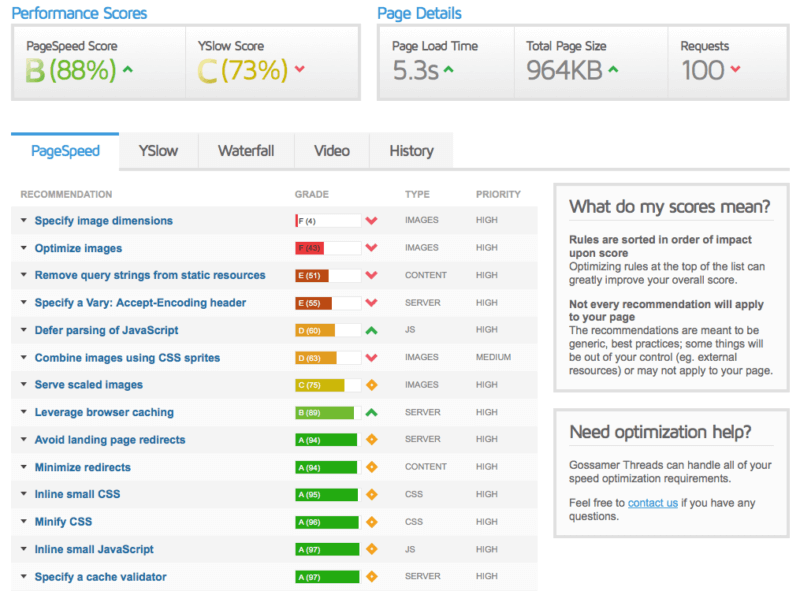
As you can see from the image above, GTmetrix highlights all the issues affecting your website loading time and even recommends the best solutions.
Another thing you can do is making the site mobile friendly. Google focuses a lot on mobile users. Therefore, if your website is not mobile-friendly, you won’t rank any higher on SERPs. The good news is that Google has a special tool you can use to test the mobile-friendliness of your website. See how it works below.
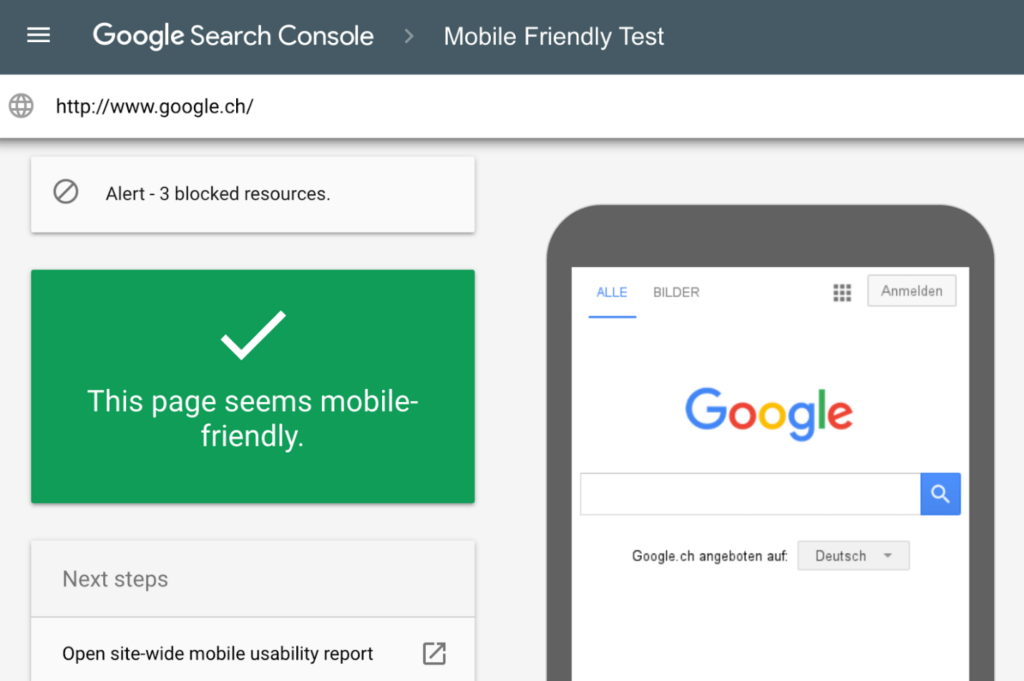
You only need to provide a link to your website, and the tool will do the rest. If the test indicates your site is not mobile-friendly, then you must do everything it takes to change that. Here are some necessary steps you can consider:
- Avoid flash.
- Make your website more responsive.
- Use significantly larger fonts.
- Compress images and CSS.
You should also ensure your site doesn’t have unnecessary pop-ups. You feel annoyed by pop-ups on other sites when trying to read some blogs so, why have them on yours?
You are harboring broken links
When it comes to a website’s Search Engine Optimization, broken links are frowned upon. Having some broken links on your site is like making promises then failing to fulfill them because you point visitors to practically non-existent content.
A good website should be well-maintained, which means that it goes through auditing now and then. Website audits tell if a link on the website is broken. Removing broken links on the website is crucial as it downplays with a website’s overall SEO score. Do that often enough, and you will never have to worry about breaking your visitor’s hearts unknowingly.
So, how do you find and remove the broken links hindering your SEO success?
Finding broken links on your website is now easier than ever because there are many tools you can use today. Google Analytics is among the best options. This tool allows you to find the broken links existing on your site since about one or two months ago. See the example below.
You can access every detail you need, including the bounce rate those broken links are causing hence making it easier to create an excellent strategy to fix them properly.
You are targeting difficult keywords
Keywords are a huge factor that every webmaster considers as they help to rank high on Google. However, you should be very wise when doing your keyword research. Keywords with a higher keyword difficulty are usually hard to rank for.
A good example would be, you see some very nice keywords with a high keyword difficulty but decide to try and use them anyway. After writing your copy, Google will have it as an option when ranking those keywords. The problem is, there are other popular and authoritative sites trying to rank for the same keywords. So, who do you think Google will allocate the top spots? Not you, especially if your website is new or not very authoritative.
You can use a tool like ahrefs to help you check the keyword difficulty. This tool is easy to use because all you have to do is enter your keyword, and it’ll show you its difficulty level.
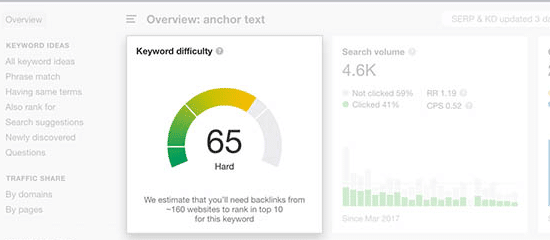
Let’s use this image as an example. As you can see from this image, the keyword is hard to rank for. Therefore, if you want to boost your SEO and appear in the top search results, using such a keyword would not be wise.
You don’t have backlinks on your website
Although there have been cases where sites have successfully thrived without backlinks, you need to have at least a few good backlinks for your website. Backlinks from a website that has authority in Google or other search engines make your site seem trustworthy. It also provides a channel for organic traffic. Most importantly, Google credits websites for backlinks. You can get in touch with a link building agency for further insight.
If you want to boost your search ranking significantly, then backlinks are something you should not take for granted. Those sites you see ranking high on search results have other top-quality websites linking back to them hence an excellent backlink profile. You now know why you find it hard to compete with such websites, right?
One step you can take to kickstart your backlinking journey is blog commenting. Commenting on a blog raises the likelihood of getting a no-follow link.
A no-follow link won’t come with much link juice, but it will contribute to having a great backlink profile.
To help you get results from this technique, follow these steps:
- Visit one of the most leading blogs in your niche.
- Go through the published articles and read one entirely.
- Scroll to the comment section at the bottom and leave a nice comment.
- Repeat the same steps on another blog.
You can also use a tool like Ubersuggest to help increase the number of backlinks in your website. This unique SEO tool allows you to enter the link to your competitor’s site and analyze it. This analysis shows you the number of backlinks your competitor has and their exact sources. So, you can even reach out to those sites and request for backlinks too hence accomplishing your goal easily.

If you type in your competitor’s domain on the Ubersuggest search bar, you will see a table similar to that in the image above. Clicking on the backlinks option will provide all the backlink sources you want to see.
A poorly executed SEO strategy
One of the deal-breakers in terms of driving organic traffic is a poor SEO strategy. Some people focus on keywords so much that they end up stuffing their content with them. A fair distribution of keywords is critical, and websites are down-marked for keyword stuffing. Further, internal and external linking, content, images, and a lot of other things need to be planned adequately.
Quality content is a crucial SEO factor you should always consider, among other factors, such as installing SEO plugins and setting up your XML sitemap. Without adhering to these factors, your chances of ranking high on Google are very thin.
So, do the following:
#1 Install Yoast SEO
Yoast SEO is one of the simplest WordPress SEO plugins you will find out there today because it even has a configuration wizard to help you with the setup. This plugin can be a great go-to option when doing on-page SEO because it analyzes your content and shows if you have used a specific keyword properly. It then guides you on how to improve the keyword density or meta description, use images, and even highlights the number of links you’ve hyperlinked.
This is how the analysis by Yoast SEO looks like.
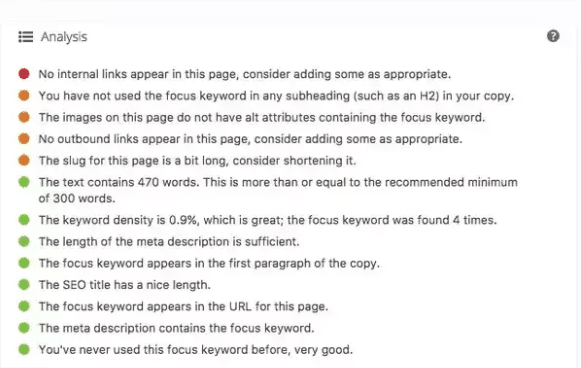
#2 Install Google Search Console, Google Analytics and an XML Sitemap
Google Search Console, an XML sitemap, and Google Analytics are all must-have essentials. The Search Console helps to track your search presence. See an example.
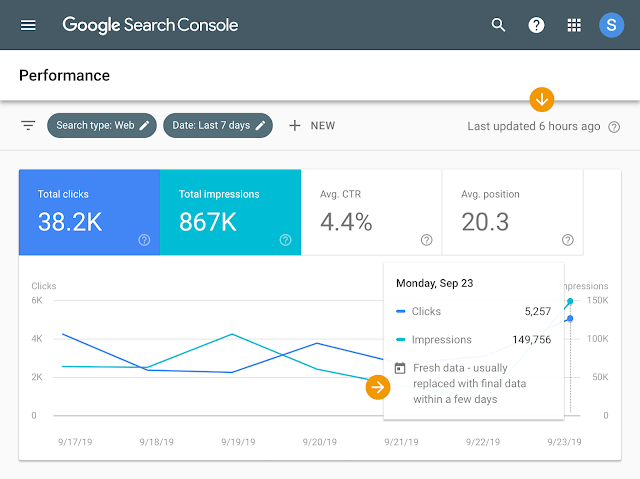
An XML sitemap allows Google bots to crawl your website easily.
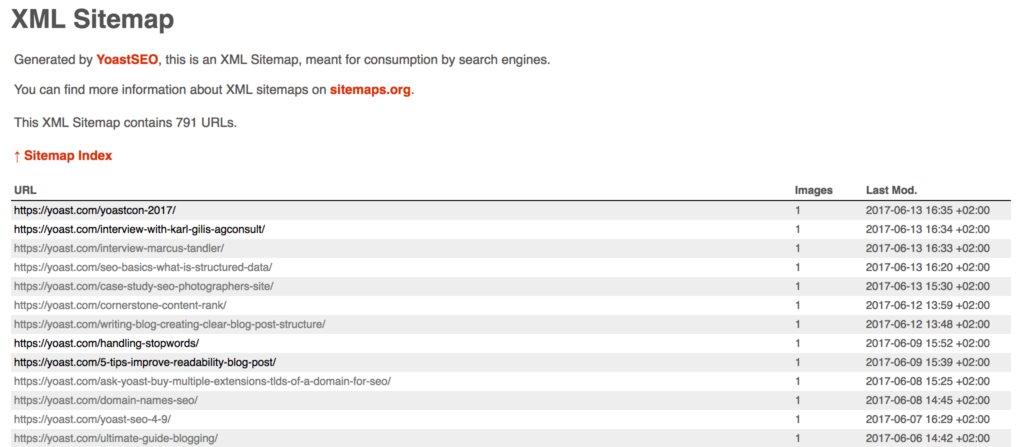
Google Analytics, on the other hand, helps track your overall traffic, but you can also use it to confirm your page with the Search Console.
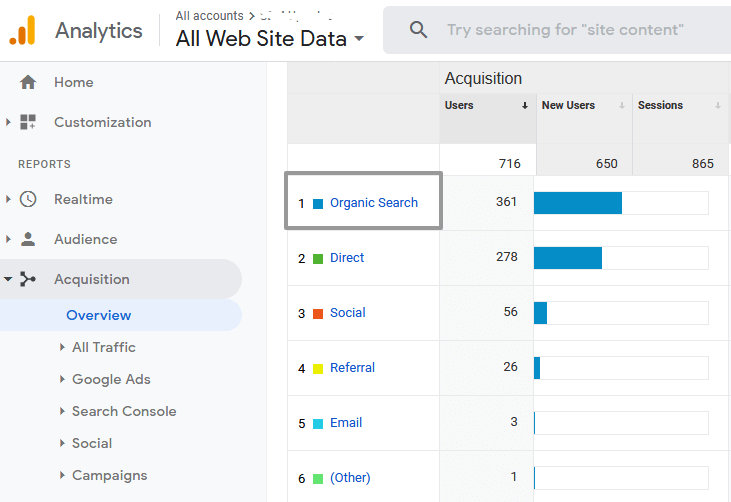
Every site owner loves receiving massive traffic. However, this does not always happen. There are many internet users today, and if your website is not getting much traffic, then you must be doing something wrong.
In this article, are the major reasons why your site is not getting enough organic traffic. You have also seen some great solutions you can apply and see results. Therefore, take the above reasons seriously and implement the provided solutions carefully, and you will receive the organic traffic you’ve been yearning for.





1 Comment